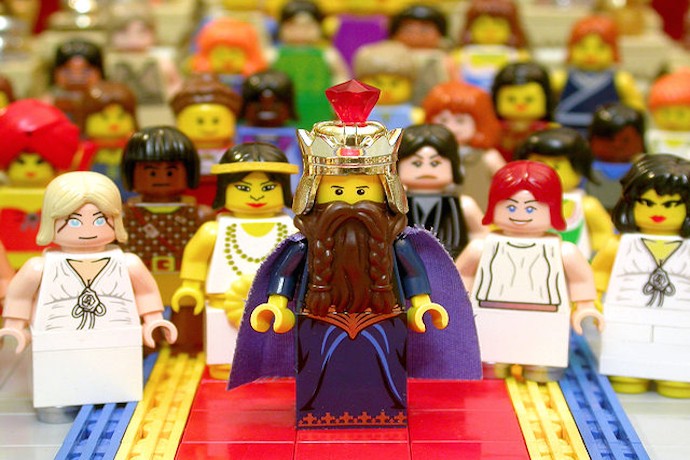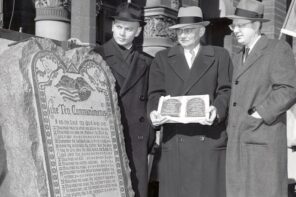Well, it’s been quite a whirlwind week for same-sex marriage, from North Carolina to Obama to Colorado—and, of course, to the many outraged conservatives concerned with preserving traditional marriage, i.e., the time-honored sacred bond between one man and one woman. Why, just last week, Tony Perkins of the Family Research Council said that marriage has meant just that for over five thousand years.
Huh?
Time to break out your Bible, Mr. Perkins! Abraham had two wives, Sarah and her handmaiden Hagar. King Solomon had 700 wives, plus 300 concubines and slaves. Jacob, the patriarch who gives Israel its name, had two wives and two concubines. In a humanist vein, Exodus 21:10 warns that when men take additional wives, they must still provide for their previous one. (Exodus 21:16 adds that if a man seduces a virgin and has sex with her, he has to marry her, too.)
But that’s not all. In biblical society, when you conquered another city, tribe, or nation, the victorious men would “win” their defeated foes’ wives as part of the spoils. It also commanded levirate marriage, the system wherein, if a man died, his younger brother would have to marry his widow and produce heirs with her who would be considered the older brother’s descendants. Now that’s traditional marriage!
Later Islamic and Jewish sources, unclear on these parameters (the prophet Muhammad, of course, had several wives), debated whether it is permissible for a man to marry a three- or four-year-old girl. St. Paul, meanwhile, said that marriage was a compromise between the ideal of celibacy and the unfortunate fact that people like to have sex. Fortunately, we pluralists can appreciate both those religious traditions which advise men to marry little girls and those which tell them not to marry anyone at all.
And of course, even until the present day, traditional marriage has meant arranged marriage. The notion that two adults would enter into a marriage on their own volition is a radical innovation in the institution of marriage, at most two hundred years old.
Oh, and let’s not forget that in Europe and North America, marriage was considered a commercial proposition first and foremost—not a romantic one. Princes married princesses not because of fairy tales, but because their parents had political alliances to consider. Further down the economic ladder, people married for a variety of biological, commercial, and genealogical reasons—but rarely for love. (See Stephanie Coontz’s excellent Marriage: A History for more.)
Oh, and that’s right, I almost forgot about interracial marriage, which in some parts of America was seen as a crime against nature and God up until the 1960s. (Of course, Moses himself was in an interracial marriage, but the anti-miscegenation crowd overlooked that inconvenient fact.) It’s easy today for the likes of Tony Perkins to say that this change was a minor one; but let’s remember that a century ago, African Americans were not considered fully human by religious conservatives. Interracial marriage—as much as it’s disgusting to even say so today—was seen as an unnatural marriage between different species.
Oh, wait a minute, I forgot the most laughable part of this whole ludicrous spectacle: that it’s a Mormon, Mitt Romney, who’s insisting that marriage has “always” been between one man and one woman. Right—except that Romney’s own great-grandfather had five wives, before the LDS church, under massive pressure and persecution, reversed its doctrine on polygamy.
So, let’s see if I can total all this up. Traditional marriage is one man with multiple wives, multiple concubines, wives conquered in war and wives acquired in levirate marriage, possibly including girls under the age of ten, but definitely not including anyone of a different ethnic group, in an arranged marriage with disposition of property as its purpose. That seems very different from “one man, one woman,” does it not?
Of course, it’s easy to say that marriage as an institution evolves—but then, if we admit that, we have to admit that sanctioning loving, same-sex unions is just another step in that evolution. Perhaps this is why the Tony Perkinses of the world simply ignore the Bible when it doesn’t suit their purposes, instead preferring to make pseudo-scientific (and wholly unsupported) claims about what’s best for children and society. The Bible’s truths are just too inconvenient.





